MiG-29 and Su-27: the history of service and competition. Part of 1
Recently, the Internet has intensified the controversy surrounding the current state of affairs in the field of equipping domestic air forces with combat aircraft. Particular emphasis is placed on the obvious advantage that the Sukhoi Design Bureau has, and the almost complete loss of the once strong positions of the MiG Design Bureau. Disputes are underway regarding the feasibility of equipping our air force exclusively with Su machines. The legitimate questions that are posed at the same time are why all orders are given to one firm, and the second one is degrading and undeservedly forgotten. The nature of the discussion comes to open accusations of the unscrupulousness of the Sukhoi company, and on the other hand, the MiG-29 and the vehicles based on it became known as obviously weak, unnecessary and unpromising. There is also the opposite opinion - the MiG-29 is a real masterpiece, which the “sukhovetsy” were deliberately crushed. It becomes a shame, and it is a shame for both sides at the same time, because Sukhoi's excellent vehicles are deservedly in demand, and the MiG-29 is no worse and deserves the most enthusiastic reviews. But why, in spite of all this, we do not see in the ranks of the new MiGs, and the old Soviet-built 29s are almost out of service? We will try to answer these questions by putting all the dots above the “AND” as far as possible.
PFI competition
In order to understand why MiG-29 and Su-27 have become exactly as we used to see them, you need to go to a distant history. The origins of the creation of both aircraft lie at the end of the 60-ies, when the Air Force launched the PFI program - a promising front-line fighter to replace the existing fleet.
Here it’s worth clarifying that in the USSR the Air Force was not the only one who exploited the military Aviation. An almost equal player was the air defense forces. The number of fighters in their composition even exceeded the number of those in the Air Force. But for obvious reasons, the air defense troops did not have bombers and attack aircraft - their task was to intercept the attacking enemy aircraft, and not to retaliate. Therefore, in the country there was a clear division into front-line fighters and interceptor fighters. The first went to the Air Force, the second to the air defense. The former were, as a rule, light, maneuverable and inexpensive aircraft, while the latter were more complex, more expensive, had a more powerful avionics, high altitude and speed.
Thus, the PFI program was originally launched by the Air Force. However, for the first time, quite complex tasks were set before the front-line fighter. The reason for this was the appearance in the United States of a powerful fighter F-15, capable of conducting long-range air combat. Intelligence reported that the plane was almost ready and would fly at the start of the 70's. An adequate response was needed, which was the TFI program. For the first time, a front-line fighter aircraft under this program was to acquire for the first time solid dimensions and powerful avionics, previously characteristic only of air defense fighters.
However, almost immediately, the TFI program began to be divided into two subspecies - LIFI (light front-line fighter), and TFI (heavy front-line fighter). The rationale for this approach was many. The fleet of two types of aircraft promised to be more flexible in use. In addition, there was information about a similar approach in the United States - a light F-16 was already preparing for flight. There were opponents of this concept, who believed that two types of aircraft complicate the operation, supply, training of personnel, etc. And most importantly - the construction of a large series of "light" fighter does not make sense - it is obviously weaker than the American F-15, as a result of which such a fighter will simply become a mass prey of an American.
Initially, the leader immediately stood out in the PFI competition - the Sukhoi Design Bureau, which presented the draft of an aircraft with an integral layout that looked promising. OKB MiG presented an aircraft close to the classic, similar to the MiG-25. OKB "Yakovlev" from the very beginning as a leader was not considered. When dividing the PFI into heavy and light, it is important to understand that initially, before the division, a single plane was seen as heavy, with an take-off weight of about 25-30 tons, so the competition of a light fighter became like an offshoot and complement of the main competition. Since Sukhoi was already in the lead in the heavy project, the light version quickly intercepted the MiG design bureau, also showing the new design of the integral assembly aircraft.
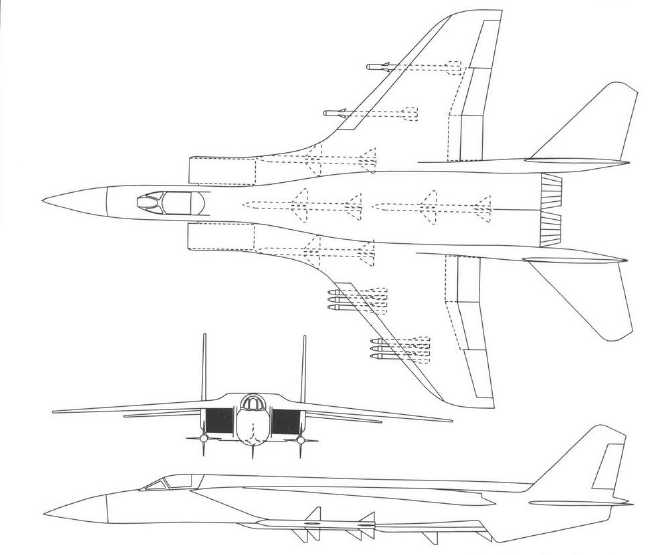
Already in the course of the competition, the customers of the air defense forces were connected to it. They were interested only in the “heavy” version, as meeting the requirements of a long flight and powerful avionics. Thus, the heavy version became a universal project - both front-line and interceptor fighter. It was able to more or less link the conflicting demands of the two departments - the Air Force and the Air Defense.
The essence of the differences of light and heavy fighters
After dividing the program into light and hard for a long time, their differences were not clearly defined. Everyone seemed to understand what the essence was, but they could not formally define it. Modern analysts are also pursuing this problem in the same way - they hardly understand why there were two planes in general. In the course are far-fetched explanations about the fact that light is more maneuverable, twice cheaper, and so on. Heavy - far. All these definitions reflect only the consequences of adopting the concept of two fighters of different weight class, or they are completely false. For example, a lightweight fighter has never been twice as cheap as a heavy one.
However, an acceptable wording of the differences was found when designing aircraft. And it is key to understanding the differences between these planes. A light fighter (MiG-29) was supposed to act in its information field, at tactical depth, and a heavy (Su-27) fighter, in addition to this, should have been able to act outside the information field of its troops.
This meant that the MiG should not fly into the territory of the enemy more than 100 km, and its guidance and control of the battle is conducted from ground control posts. Due to this, it was possible to save on the composition of the avionics, maximally simplifying the aircraft, and at this expense improve flight performance and make the aircraft mass and inexpensive. The term “expensive” in those years was understood not as cost (money was given “as much as necessary”), but production mass (product complexity, laboriousness of assembly), the ability to assemble such planes quickly and a lot. In terms of the composition of their weapons, the main caliber was the P-60 (and later P-73) heat-guided missiles, which in some cases supplemented the P-27. The airborne radar had a stable detection range not greater than the range of the launch of the P-27 missiles, in essence, being a radar sight for these missiles. Difficult and expensive means of electronic warfare or communications were not provided.
Su-27, on the contrary, should be able to rely only on their own strength. Independently had to conduct reconnaissance, analyze the situation and attack. He had to go to the rear of the enemy and cover his bombers in deep raids and intercept the enemy’s targets over his territory, ensuring the isolation of the theater of operations. Its ground control posts and radar on the territory of the enemy was not expected. Therefore, a powerful on-board radar was immediately required, capable of seeing further and more than that of the “light” fellow. The flight range is two times higher than that of the MiG, and as the main armament, the P-27, complemented by the long arm P-27E (increased energy) and the P-73 melee missiles. The radar was not just a sight, but also a means of covering the air situation and intelligence. There should have been own EW and powerful communications. Ammunition - two times more than that of the lung, because to fight in isolation from their forces, may have a long and high voltage. At the same time, the aircraft was supposed to remain capable of conducting a maneuverable battle, just like a light fighter, since over the territory of the enemy, he could meet not only his “heavy” opponents in the form of F-15 and F-14, but also F-16, optimized for “dog dumps”.
Briefly, the Su-27 was a plane of air superiority in the theater of operations in general, and the MiG-29 was solving the more private task of covering its troops from enemy air strikes over the line of contact.
Despite the fact that both planes were originally divorced in different weight categories, the competition between them began to appear almost immediately. Various scientific research institutes and specialists expressed a wide range of opinions on this matter. The system of two cars was regularly criticized. At the same time, some called for “tightening” the light to the level of the heavy, others - to give up the light, concentrating all forces on the more effective “heavy”.
The evaluation of the two-aircraft system was carried out on a financial basis. It turned out that LFI is not able to make half the price of PFI. This should be remembered, because in modern debates it is often argued in favor of the MiG as a cheap but efficient aircraft. This is not true. By Soviet standards, where they didn’t spare their money for defense, LFIs costing 0,75 from the PFI were quite inexpensive aircraft. Today, the concept of "inexpensive" looks very different.
The final decision in the fate of the two airplanes remained with the USSR Ministry of Defense - both cars are needed, each will occupy its own niche and will not interfere with each other. So it happened in the Soviet weapons system.
In the ranks
By 1991, both aircraft took place and stood firmly in the ranks. Of exceptional interest is how they were distributed in the states of the Air Force and Air Defense.
Air Force fighter aircraft consisted of 735 MiG-29, 190 Su-27 and 510 MiG-23. There was also about 600 MiG-21, but they were all concentrated in training shelves. In the most powerful and combat-ready mix of the Air Force - 16 of the Air Force in the GDR there were 249 MiG-29 and 36 MiG-23, and not a single Su-27. It was the MiGs that formed the basis of front-line aviation, becoming the main striking force of the Air Force. The southern flank of the Soviet grouping supported the 36-I VA in Hungary with its 66 MiG-29 and 20 MiG-23.
It would seem that the existing state of affairs clearly demonstrates which aircraft the Soviet command considered the main and the best. There was not a single Su-27 in the advanced units. However, the situation is somewhat more complicated. MiG-29 was to become an expendable material of the outbreak of world war, reflecting the first blow. It was assumed that a significant number of these aircraft would die quickly, but would ensure the deployment and advance of the ground forces of the USSR and ATS.
In the back, the troops stationed in the GDR were breathing troops in Poland and Ukraine, which were to develop the initial success of the army. And now there was just Su-27 FA Air Force - two regiments in Poland (74 Su-27) and one regiment in Mirgorod (40 Su-27). In addition, it is obvious that the re-equipment of the Air Force on the Su-27 was far from complete, the 831 IAP in Mirgorod received the Su-27 in 1985, 159-IAP in 1987, 582-IAP in 1989. Those. The saturation of the air force FAs with the Su-27 fighter jets was quite measured, which cannot be said about air defense, where, over the same time period, 2 times more aircraft of this type were obtained.
In the air defense forces there was practically no MiG-29 (in the combat units - none, but only in the air defense there were about 15 MiG-29, but they were concentrated in the Air Defense Command Training Center of the Air Defense Army) and around 360 Su-27 (and besides 430 MiG-25, 410 MiG-31, 355 Su-15, 1300 MiG-23). Those. at the beginning of serial production, MiGs went exclusively to front-line aviation, and the first thing they did was to get Air Defense troops to the Air Defense Forces - in 1984, they appeared in the 60 air defense IAP (Dzemgi airfield). This is logical, since the MiGs blocked the immediate need for 4 generation fighters of the Air Force. And in the air defense forces at that time, the bulk of the MiG-23 and Su-15 could only be replaced by the Su-27. MiG-31 stood alone and replaced primarily the outdated MiG-25.
In addition to the Air Force and Air Defense, the 4 fighter generation was also received by naval aviation - there were about 70 MiG-29 in it. However, as a promising deck option, the sailors chose the Su-27K option - as having a longer flight time and powerful avionics, which is important in sea conditions. MiG-29 in the Navy were due to the treaty on conventional weapons in Europe, providing for concessions in relation to naval aviation. So two regiments of 29-x in Moldova and Odessa region got to the sailors. They did not represent great value in the role of sea fighters.
An important point in understanding the role and place of the MiG-29 and Su-27 was export deliveries. There is an amazing picture - Su-27 was not supplied abroad during the Soviet era. But the MiG-29 began to actively enter the air forces of the Soviet allies. On the one hand, this was determined by the peculiarities of the geography of these countries - Su-27 there is simply nowhere to turn. On the other hand, the Su-27, as a more complex and expensive aircraft, was “secret”, and the MiG-29, being a simpler machine, was easily allowed to be released outside the home air force.
Thus, in the USSR Armed Forces two new generation aircraft did not compete with each other, each solving its own task. By the end of the USSR, the fighter armament system consisted of three types of promising aircraft - a light MiG-29 for the Air Force FA, a universal heavy Su-27 for both the Air Force FA and the AA air defense, and not a fighter-like "weight" classification of the MiG 31 - exclusively for IA air defense. But already in 1991, this slender system began to collapse along with the country, giving rise to a new round of internal competition between two great fighters.
On the issue of classification
So far, the controversy has not subsided, what kind of fighter actually turned out in the project MiG-29? Easy or not? It comes to the fact that ordinary people consider the MiG to be a kind of "middle" fighter, occupying an intermediate position between the light and the heavy.
In fact, the concepts of "light" and "heavy" were initially very conditional and relative. They existed together, in the framework of the DFI program, and their appearance was caused by the need to somehow separate the projects of two new fighters in one program. The LIFI, the future MiG-29, became light, and it was not light in itself, but in combination with the future Su-27. Without Su-27, the concept of "light" becomes insignificant.
As for the Air Force and Air Defense of the USSR, there was no weight classification. In the air defense there were fighter-interceptors, in the Air Force - front-line fighters. Just the needs of the Air Force were such that there were always mostly cars smaller, simpler and cheaper. And in the air defense was also the MiG-31, which was very, very heavy, even against the background of the Su-27. So a similar weight classification is very conditional.
Against the background of foreign analogues, the MiG-29 looked quite traditional. The competitors F-16, Rafale, EF-2000 had almost the same masses and dimensions. For most of the countries operating these planes, they are neither light nor any other. They are usually the only type of fighter in service with most countries. Nevertheless, in clear terms to the philistine, all these planes can be easily combined into a subclass of "light", against the background of clearly larger Su-27, F-15, F-22, PAK-FA. The only exception in this series will be the American F / A-18, which really is located almost exactly in the middle between the typical "light" and typical "heavy" fighters, but it should be remembered that this is a very specific machine, created by the special, maritime requirements based on aircraft carriers.
As for the MiG-31, it is, with its dimensions and weights, a unique exception that no longer exists anywhere. Formally, it is also "heavy", like the Su-27, even though the difference in maximum take-off weights is one and a half times.
To be continued ...
- Alexey Alex_59 Polyakov
- http://russianplanes.net/
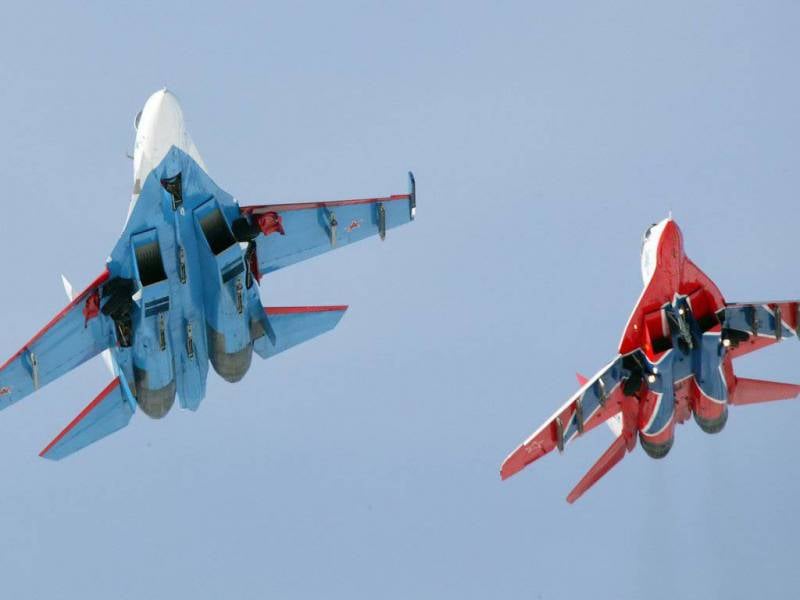
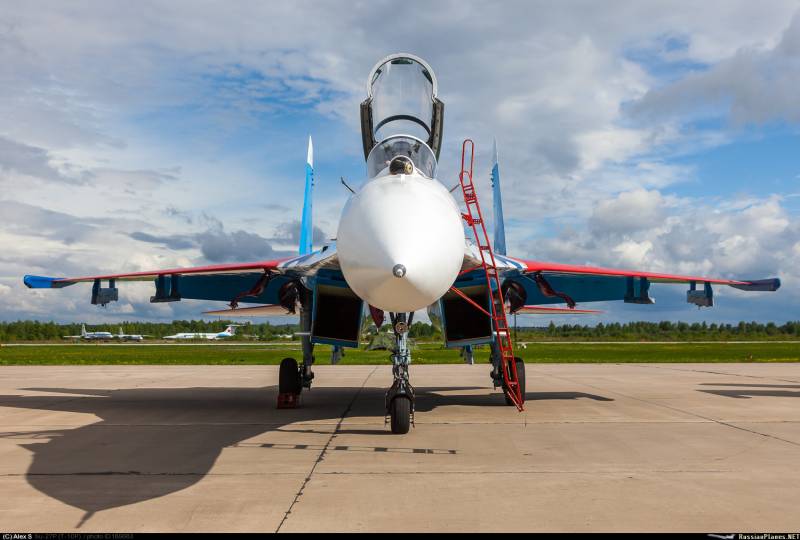
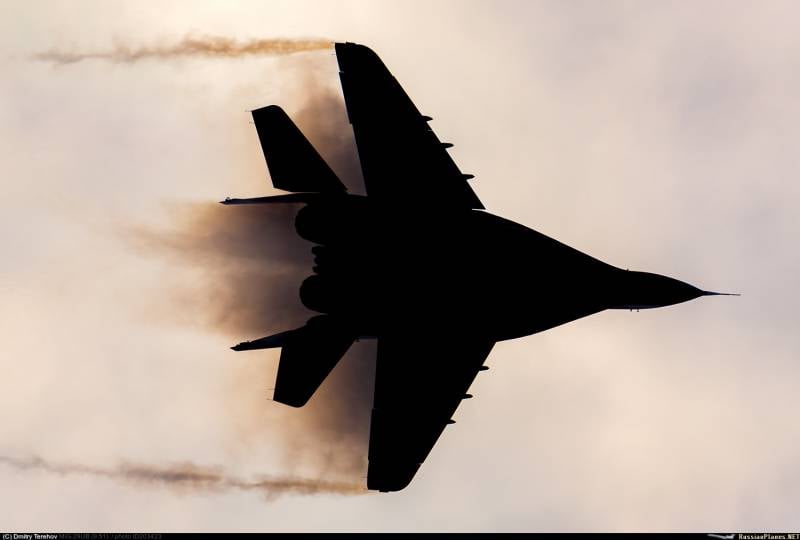
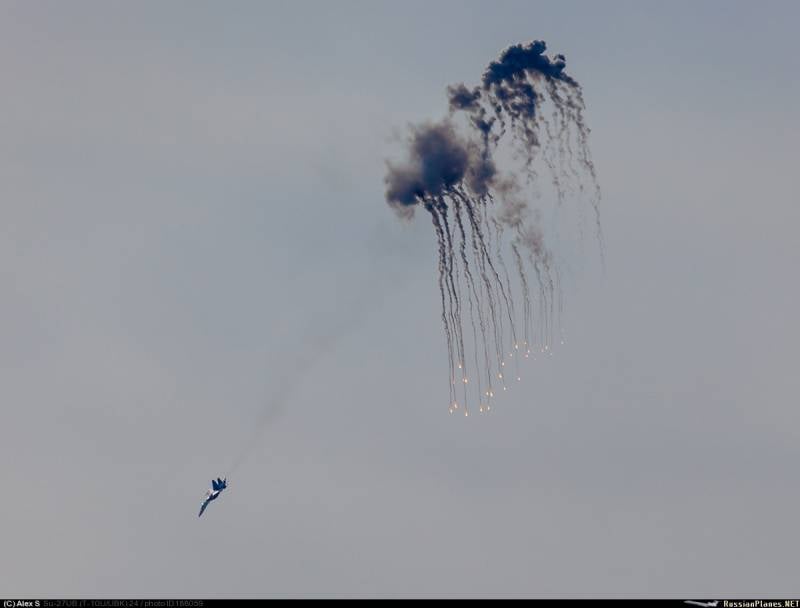
Information